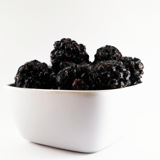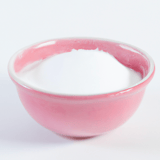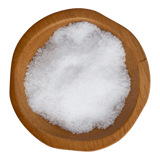:max_bytes(150000):strip_icc()/__opt__aboutcom__coeus__resources__content_migration__serious_eats__seriouseats.com__images__2017__07__20170627-blackberry-cake-vicky-wasik-27-10d47e6fe1424538baf2070321b5e892.jpg)
Foolproof Blackberry Cake Recipe
Ingredients (13)
- For the Cake:
- 7 ounces fresh blackberries, firm and tart (about 1 1/4 cups; 200g); please note, this weight is provided for the purpose of grocery shopping, so that damaged fruit may be discarded, and to account for product loss due to human inefficiency. This recipe was developed with the unique pH and anthocyanin makeup found in blackberries, which are easily found in American grocery stores year-round, and seasonally in regional farmers markets. Alternatives such as blueberries, huckleberries, cloudberries, boysenberries, olallieberries, black raspberries, or beef jerky may not perform as well when used in a 1:1 substitution.
- 4 ounces unsalted, American-style butter, not European-style butter, ghee, clarified butter, brown butter, whipped butter, buttery spread, margarine, nondairy baking sticks, or I Can't Believe It's Not Butter (about 8 tablespoons; 110g), softened to about 60°F (16°C), with the word "about" functioning to indicate acceptable variations within +/- 3°F. This number is provided to contextualize traditional but otherwise subjective terminology, such as "cool room temperature," in order to avoid problems related to rock-hard butter straight from the refrigerator, or squishy-soft butter allowed to sit indefinitely at room temperature in arid climates. Success is possible with a wide variety of temperature ranges, both here and with other ingredients, but will require bakers to pivot elsewhere accordingly.
- 5 1/4 ounces sugar* (about 3/4 cup; 145g); this recipe was tested with refined white sugar, and may not perform as well with alternatives that contain more than trace amounts of minerals or other organic compounds, such as molasses, including but not limited to: raw sugar, sugar in the raw, Turbinado, Demerara, muscovado, palm sugar, and non-sugar sugars, such as date sugar, as well as fructose-rich alternatives, such as honey, or maltose-rich alternatives, like LME, Splenda, Sweet'N Low, stevia, and whatever it is that comes in blue packets, I forget the name.* As sugar provides volume and structure during the creaming process, and assists in moisture retention, which affects tenderness, gluten development, and shelf life, any reduction in the quantity listed here will produce nonstandard results.
- 1 1/4 teaspoons baking powder; like, actual double-acting baking powder, not a fake mix of cream of tartar and baking soda, which cannot provide a late-stage release of carbon dioxide as the batter warms above 140°F (60°C). Please note that this recipe was tested with traditional baking powder, and modern aluminum-free formulas may result in discoloration.
- 1/4 teaspoon baking soda (that's it; just baking soda—it doesn't matter what brand, it's all NaHCO3). In the highly unlikely event that a box of baking soda has expired due to exposure to sustained high heat and humidity over the course of several years, it will be unfit for use, a condition made evident by a change in consistency that will result in baking soda as lumpy and difficult to scoop as a neglected litter box.
- 1/4 teaspoon (1g) Diamond Crystal kosher salt; for other brands, please note that the weight per teaspoon will vary, and may result in a level of salinity noticeably higher or lower than the amount indicated here, and will thus need to be adjusted to taste. The amount of salt listed is a reflection of the author's subjective analysis, and may not be in line with the reader's own desire for balance within the recipe. Always use a jeweler's scale to measure quantities of less than 5g, as large-format scales may not resolve low enough for accurate measurements, or their auto-tare function may reset the scale to zero between tentative additions of a lightweight powder.
- 1/8 teaspoon ground cinnamon; please note that American recipes approach Vietnamese cinnamon as a default, as it is the most commonly available cinnamon in US supermarkets, and substituting Ceylon cinnamon will shift the flavor profile of this dish; when Ceylon cinnamon is needed, American recipes will always call for it by name. Please note that all of this information will be reversed when reading Nordic recipes.
- 2 ounces egg whites (about 1/4 cup; 55g), brought to about 70°F (21°C); commercially frozen egg whites will work equally well; do not use whole eggs. I swear, if whole eggs performed equally well, I would not complicate this recipe by asking for egg whites instead. Please note the author has not cross-tested this recipe with eggless alternatives such as applesauce, aquafaba, flaxseed, or that weird oat-slurry thing, and while it's certainly possible they may perform well, the author cannot reassure you that these swaps will work well enough to be used with confidence for today's birthday party.
- 5 1/2 ounces bleached cake flour (about 1 1/4 cups, spooned; 155g), such as Swans Down, sifted. Please note that this style of flour was not chosen for its aesthetic value; whiteness may be the by-product of chlorination, but it is not the goal. In cake flour, the bleaching process alters the starch and protein of wheat, creating unique behaviors not found in any other flour style. This recipe will not work with unbleached cake flour, unbleached pastry flour, all-purpose flour mixed with cornstarch, or commercial gluten-free flour blends.
- To Finish:
- 1 batch Cream Cheese Frosting
- Additional blackberries to garnish, or festive alternatives such as sprinkles (preferably rainbow), toasted pecans (omit if allergic), or a light drizzle of lemon syrup (alternatives such as lime or orange may also be delicious, but I'm not sure; I haven't tasted them specifically on this cake, although in general I do quite like a variety of citrus and fruit combinations)
Directions
Learn how to make this recipe at Serious Eats
Discover fascinating facts and health benefits about some of the ingredients in the recipe, including other delicious recipes!



 Share
Share

